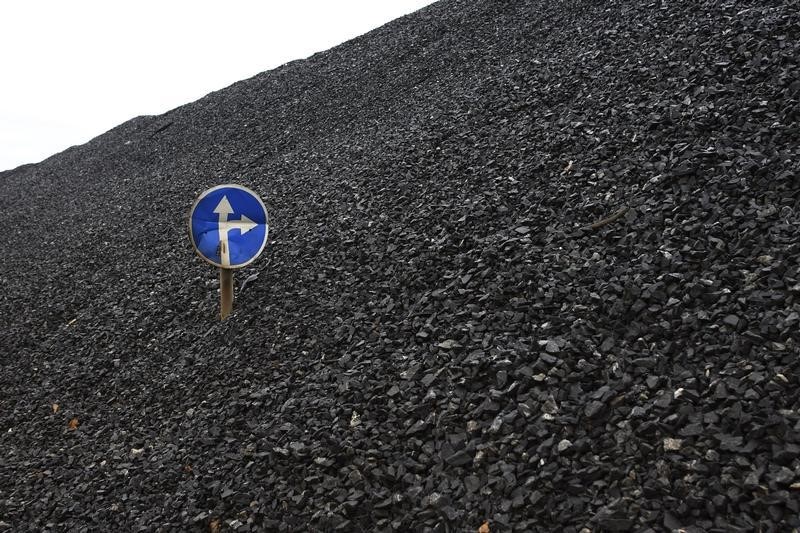* Physical coal prices loiter around $50 per tonne on mild winter
* Coal futures test 2003 lows as long-term demand looks weak
By Henning Gloystein
SINGAPORE, Jan 6 (Reuters) - Thermal coal prices started the new year warily with physical cargo values around $50 per tonne and futures testing $40 a tonne for the first time since 2003, as last year's commodity rout spills into 2016.
Physical coal cargoes for prompt shipment from Australia's Newcastle terminal last settled at $50.35 a tonne, below levels seen during the global credit crisis of 2008/2009.
But prices for cargoes from South Africa's Richards Bay terminal jumped almost 7 percent from late December to $53 as demand from its main buyer India was strong and domestic coal mining output remained volatile due to frequent disruptions to power supplies.
The weakest of the main physical coal prices were European, where cargoes for delivery into Amsterdam, Rotterdam or Antwerp (ARA) were at $48.20 a tonne, also below 2008/2009 levels.
"Demand for coal in Europe remains weak due to significantly warmer than average temperatures," said commodities brokerage Marex Spectron.
Meteorological data shows that Europe's winter has so far been much milder than usual, although a current cold spell could last until later in January.
The overall mild weather has been in large part due to the global El Nino weather phenomenon which causes mild weather across the northern hemisphere.
Reflecting an expectation that prices will not rise anytime soon because of falling demand and ample supplies, benchmark coal futures were not far off $40 a tonne, down over 80 percent since their historic peak in 2008 and to a level not seen since 2003.
"The macroeconomic conditions do not offer any support ... Manufacturing activity in key coal consuming countries has slowed," Marex Spectron said, referring to a slowdown in growth especially in coal-reliant Asia.
Consultancy FGE said that coal demand in the world's top consumer China was slowing due to "a slowdown of the economy and in an effort to control air pollution, including shutting down coal-fired power plants and capping their running hours to give way to renewable power".
While most commodities from oil to copper and iron have seen prices tumbling on the back of supplies exceeding demand, the coal sector has been hit particularly hard as, unlike other commodities, many analysts do not believe that its demand will ever fully revive.
The International Energy Agency (IEA) said in December that coal consumption in China had likely peaked, paving the way for a decline in global use even as India becomes the main driver for demand.
(Editing by Joseph Radford)
